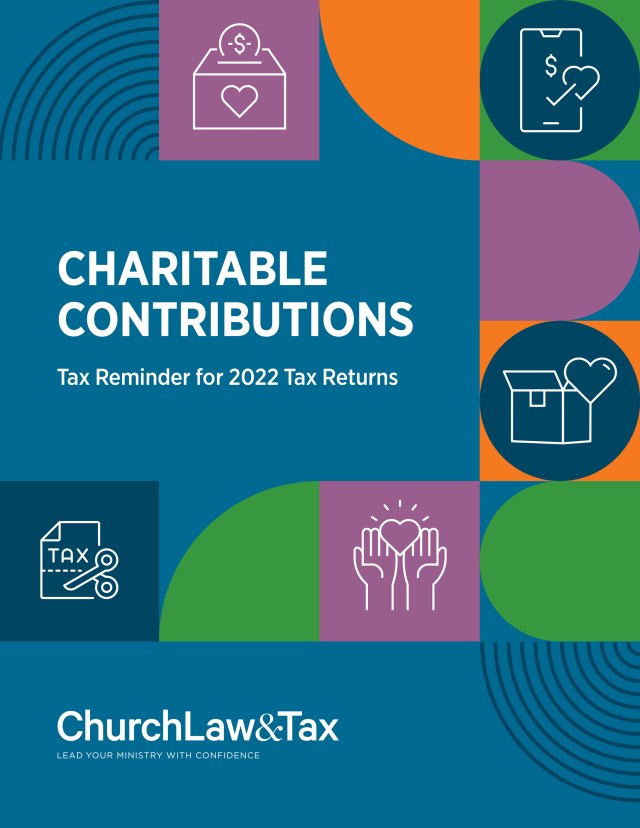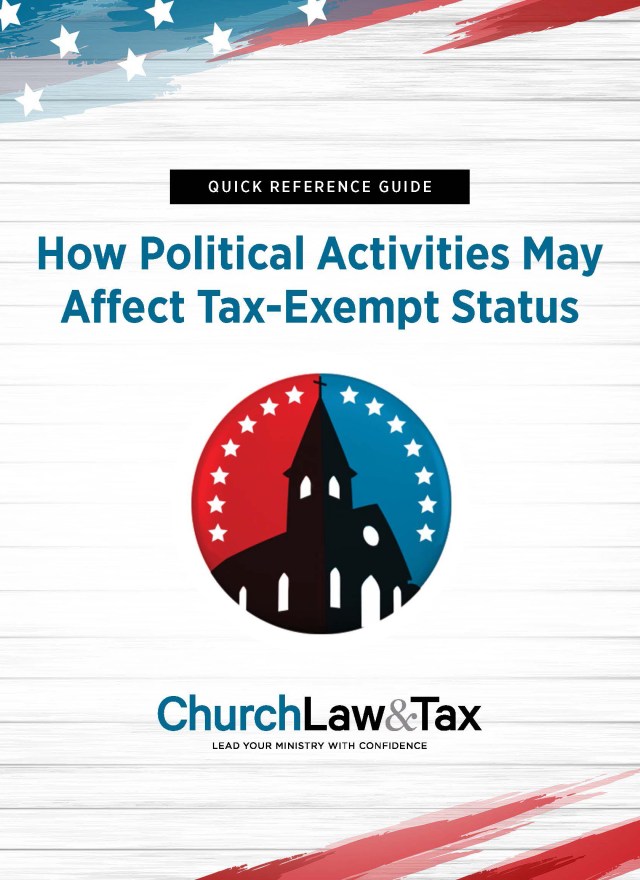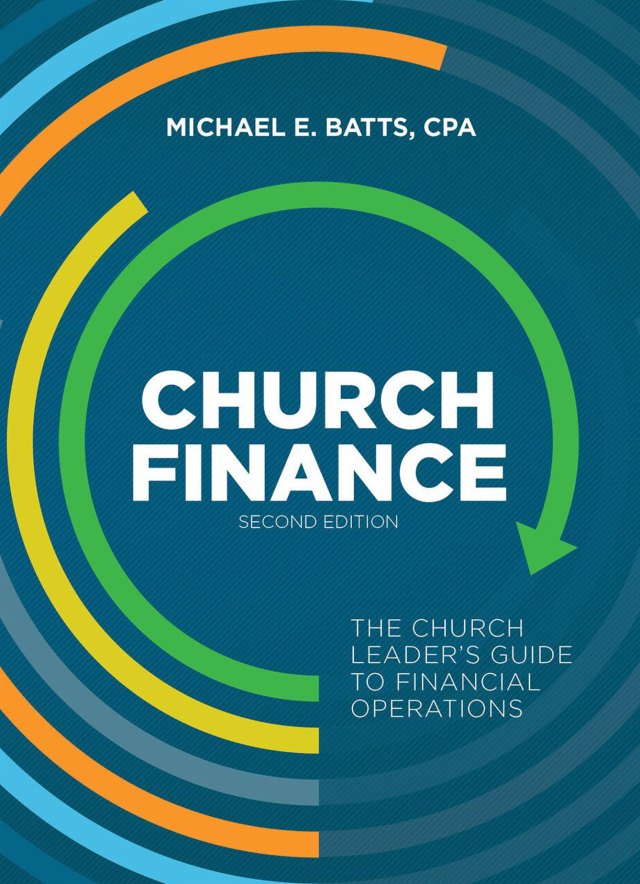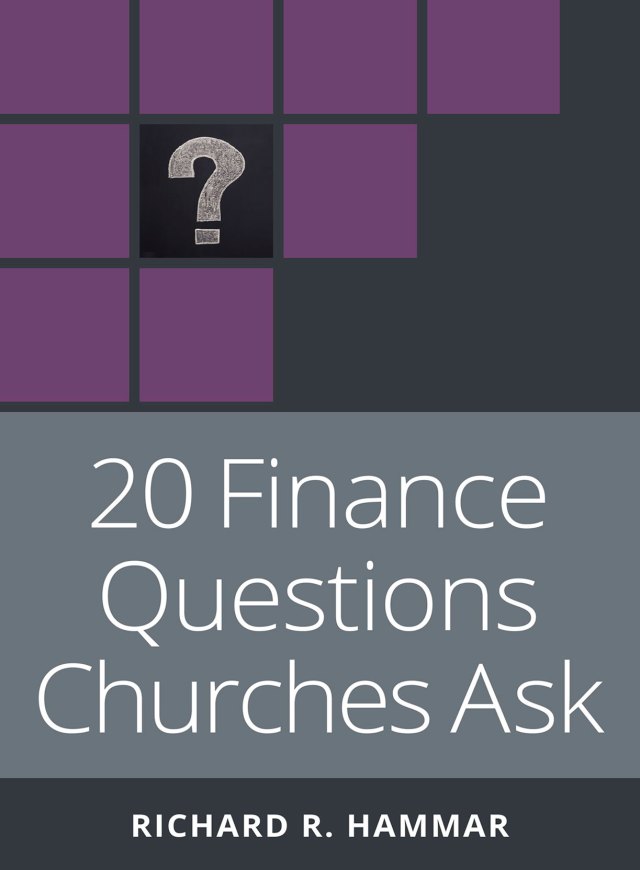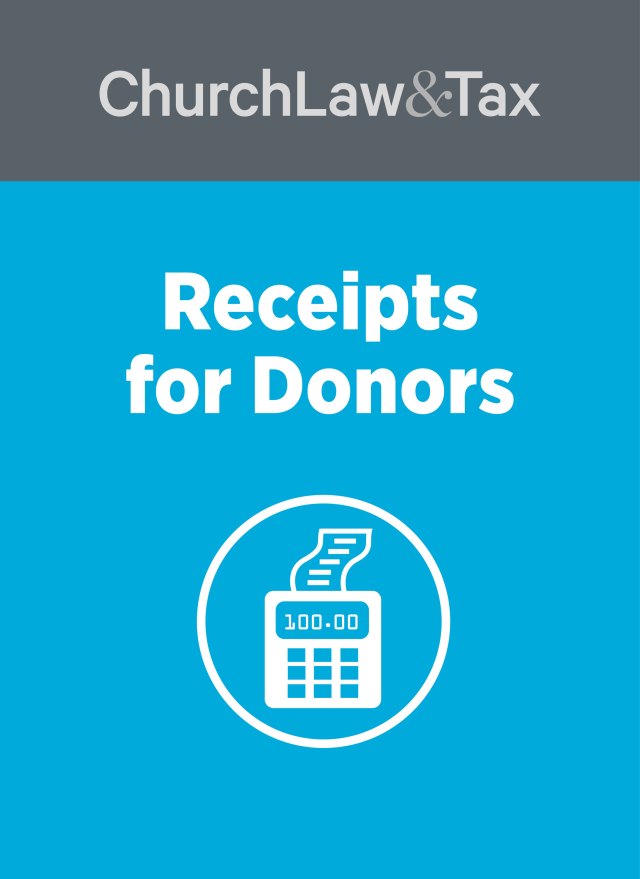Churches are generally exempt from federal income tax. However, income from certain business activities may be taxable if those activities are not directly related to the church’s exempt purposes. This type of income is known as unrelated business income (UBI). Understanding what triggers UBI—and how to avoid it—is essential for maintaining tax-exempt status.
Section 1: The Basics of Unrelated Business Income
What Is Unrelated Business Income?
A church must pay federal income tax on net income from an activity that meets all three of the following criteria:
- It is a trade or business.
- It is regularly carried on.
- It is not substantially related to the church’s exempt purposes.
In addition, income from debt-financed property may also be considered UBI (see Section 3).
Why Does the UBI Tax Exist?
Congress introduced the UBI tax to prevent tax-exempt organizations from gaining an unfair competitive advantage over for-profit businesses.
What Counts as a Trade or Business?
Any activity carried on to produce income through the sale of goods or services, where profit is at least one motive (not necessarily the primary one).
Examples:
- Not a trade or business: Selling T-shirts at a loss ($7 sale price vs. $8 cost).
- Trade or business: Annual Christmas tree sales that generate profit for youth ministry.
What Does “Regularly Carried On” Mean?
The IRS compares your activity to similar for-profit businesses in terms of frequency and duration.
Examples:
- Not regular: A 2-week annual bake sale is not frequent enough to be “regular.”
- Regular: Annual Christmas tree sales held during the same time as for-profit vendors.
What Does “Substantially Related” Mean?
Just using income to support ministry isn’t enough. The activity itself must further the church’s mission.
Define Your Church’s Exempt Purposes
Your church’s governing documents should clearly define your exempt purposes. These may include religious, educational, and charitable goals. A broad purpose statement gives more room to justify activities as related.
Example:
Selling candles during Advent supports reverence and worship of Christ’s birth.
Document how each activity contributes to the mission.
Mixed Activities: Fragmentation Rule
If an activity includes both related and unrelated elements, they must be separated.
Example:
- Related: Selling Bibles and religious literature.
- Unrelated: Selling cosmetics in the same bookstore.
Common Examples of Unrelated Activities
- Public restaurants
- Paid parking lots
- Selling secular goods
- Fee-based administrative services
- Non-religious travel tours
- Advertising sales
Section 2: Specific Exclusions from UBI
Federal law excludes certain types of income from UBI:
- Dividends, interest, annuities, capital gains
- Gains from the sale of property (not inventory)
- Royalties
- Rent from real property
- Activities conducted mainly by volunteers (volunteer exception)
- Activities for the convenience of members (convenience exception)
- Sales of donated merchandise (donated goods exception)
- Qualified sponsorship payments
- Certain bingo games
Note: Some exclusions don’t apply if the income is from debt-financed property or controlled entities.
Volunteer Exception
If more than 85% of the labor is unpaid, the activity is excluded.
Example: A volunteer-run church coffee shop isn’t UBI—even if it’s regularly open to the public.
Convenience of Members Exception
Activities conducted for the convenience of the congregation, staff, or students are excluded.
Example: A refreshment stand open only during worship services qualifies for this exception.
Donated Goods Exception
If 85% or more of items sold are donated, income is excluded.
Example: A thrift store run by paid staff sells 95% donated merchandise—exempt from UBI.
Qualified Sponsorship Payments
Income from sponsorships is not UBI if the sponsor receives only acknowledgment, not advertising.
Permissible recognition includes:
- Sponsor’s name, logo, slogan (no qualitative statements)
- Product lines
- Contact information
- Visual depictions of products (value-neutral)
- Statements of exclusive sponsorship
Not permitted:
- Comparative or qualitative claims
- Price info or savings
- Endorsements or inducements to buy
- Ads in regular periodicals (event programs are OK)
Exclusive provider arrangements are not qualified sponsorships.
Example:
- Qualified sponsorship: Car dealer pays $20,000 to sponsor an event, displays vehicles, and receives logo placement.
- Not qualified: Beverage company pays $10,000 to be exclusive provider—this may be UBI.
Sponsorships should be reviewed by legal and tax counsel for compliance.
Bingo Games Exception
Bingo income is not UBI if:
- The game meets the legal definition of bingo
- It is legal in the jurisdiction
- It is not regularly offered by for-profits in that area
Note: Scratch-off tickets and non-bingo games don’t qualify.
Section 3: Debt-Financed Income
Even typically exempt income (rent, interest, gains) may be taxable if it comes from debt-financed property.
What Is Debt-Financed Property?
Property used to produce income and acquired or improved with acquisition indebtedness during the year or 12 months before sale.
What Is Acquisition Indebtedness?
Debt incurred:
- When acquiring/improving property
- Because of the acquisition/improvement
- When it was reasonably foreseeable at the time of acquisition
Collateral doesn’t matter. The purpose of the debt is what counts.
Tracing and Refinancing
Complex tracing rules apply when debt is refinanced or consolidated. Professional tax advice is essential.
Exemptions from Debt-Financed Income
- 85% or more of the property’s use is for exempt purposes
- Used in volunteer, convenience, or donated goods exception activities
- Educational institutions may qualify for special exemptions
The Neighborhood Land Rule (for churches only)
If the church intends to convert debt-financed land to exempt use within 15 years, income from it may be exempt.
- Church must notify IRS after 5 years
- IRS ruling helps but isn’t mandatory if property is converted by Year 15
Calculating Taxable Debt-Financed Income
Rental Income Example:
- Rental income: $100,000
- Average debt: $600,000
- Property basis: $1 million → 60% ratio
- Taxable portion: 60% of income = $60,000
Sale Gain Example:
- Gain on sale: $9 million
- Highest debt during 12 months: $600,000
- Basis: $1 million → 60% ratio
- Taxable portion: 60% of $9 million = $5.4 million
Section 4: Managing UBI—Strategy and Compliance
Is UBI Always a Bad Thing?
Not necessarily. Income is helpful—even if some is taxed. But churches should plan carefully.
Filing Requirements
- If UBI gross income exceeds $1,000 → must file Form 990-T
- Due by 15th day of 5th month after fiscal year-end
- State returns may also be required
Other Considerations
- May trigger sales tax obligations
- Could impact property tax exemptions depending on state law
Calculating Net UBI
Net UBI = Gross unrelated income – Directly connected expenses
- Include allocable administrative and overhead costs
- $1,000 standard deduction allowed
- Net losses can be carried back or forward
Proper expense allocation can often reduce UBI to zero
How Much UBI Is Too Much?
A substantial amount of UBI activity may jeopardize a church’s 501(c)(3) status. There is no hard threshold, but many experts use 15% of revenue as a cautionary marker.
Generating Income Without Triggering UBI
Bookstores and Gift Shops
- Volunteer exception: 85% or more unpaid staff → UBI excluded
- Substantially related sales: All items directly support the mission
Location and Promotion Don’t Affect Exemption
Churches may:
- Operate off-site
- Sell online or via catalogs
- Offer public promotions
IRS rulings confirm that commercial style doesn’t disqualify a related activity
Parking Lots
- Operated by volunteers → not UBI
- Leased to for-profit → rental income (UBI if debt-financed)
- May qualify for exempt-use or neighborhood land exceptions
Concerts and Events
- If the event directly supports mission (e.g., worship, outreach), income isn’t UBI
- Volunteer-run events are also exempt
Thrift Shops and Online Sales
- If 85%+ of items are donated → no UBI
- Applies to brick-and-mortar and platforms like eBay
Corporate Sponsorships
- As long as the church offers acknowledgment (not advertising), income is not UBI
Scrip Programs
- Buying gift cards at discount and reselling is UBI unless volunteer-run
Coffee Shops and Cafés
- Operated for attendees’ convenience → not UBI
- Operated by volunteers → not UBI
- Alternative: lease the space (may still avoid UBI if no debt or exemptions apply)
Final Thought
Unrelated business income doesn’t have to be a threat. With careful planning and documentation, churches can raise funds in creative and compliant ways while preserving their tax-exempt status.
When in doubt, consult knowledgeable legal and tax counsel.
We’ve used a combination of AI and human review to make this content easier to read and understand.

